Cockscomb Basin Wildlife Sanctuary and Jaguar Reserve
Cockscomb Basin Wildlife Sanctuary is not only the most famous national park in Belize, but also the world’s first Jaguar Reserve. It was high on our list of things to see whilst travelling through the country, but there was limited information about it online. Search results tend to show you Cockscomb Basin tours that cost at least $80 USD per person and that was beyond our backpacker budget.
Thankfully, Cockscomb Wildlife Basin Sanctuary is actually cheap and easy to visit without a tour guide. In this post I’ll tell you how to do it without breaking the bank. But first, let me tell you about our experience and what Cockscomb Basin has on offer for the adventurous visitor.
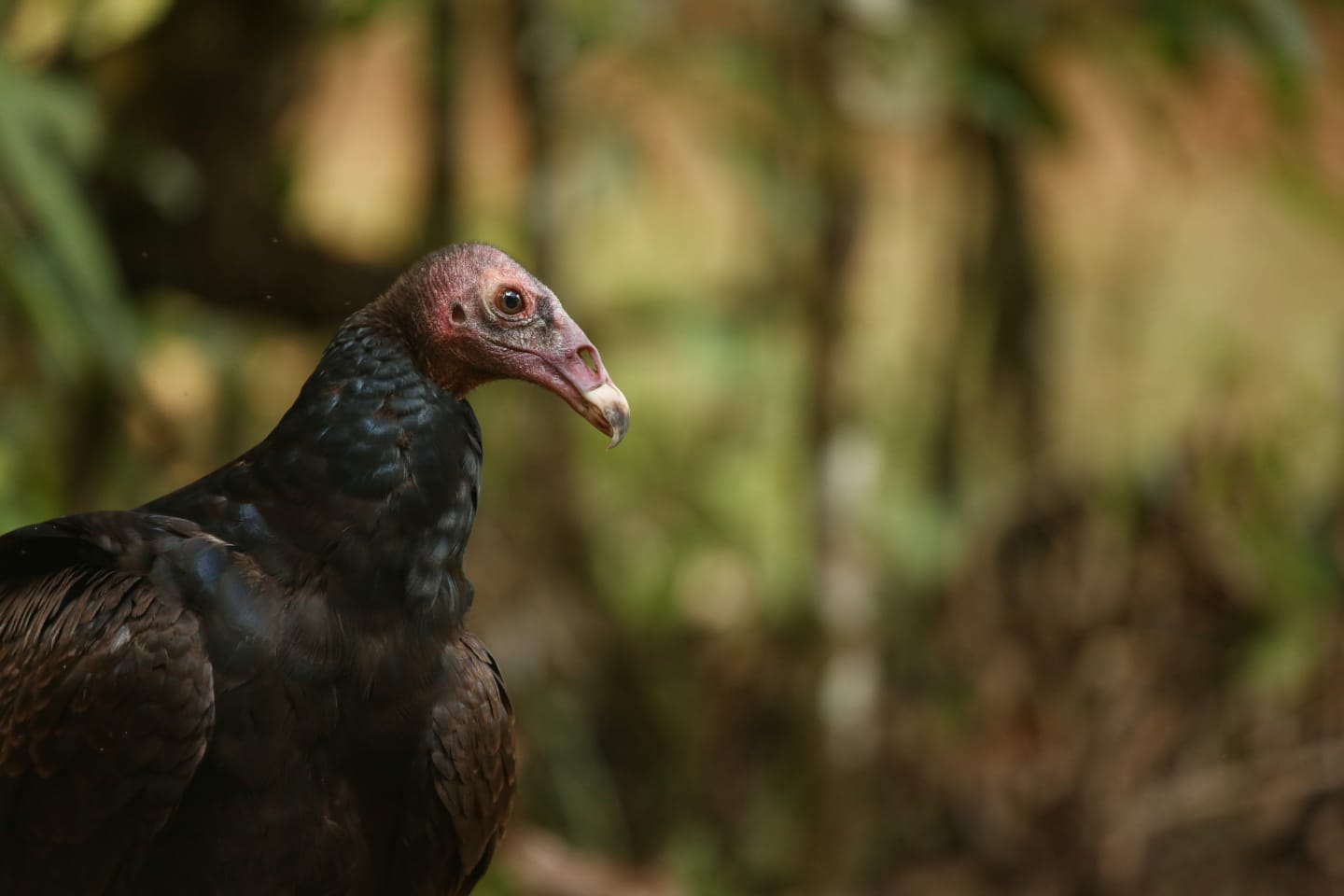
Cockscomb Basin Wildlife Sanctuary is located in the east of Belize and home to hundreds of wildlife species. Jaguars, birds, deer, butterflies, turtles, crocodiles, snakes and spiders. The gang really is all here, but sadly the chances of spotting a Jaguar are slim. Although it’s almost guaranteed one will have seen you! In addition to wildlife, Cockscomb Basin is a great place for trekkers with 17 different hiking trails ranging from ‘Easy’, to ‘Medium’, to the super tough …’Intense’.
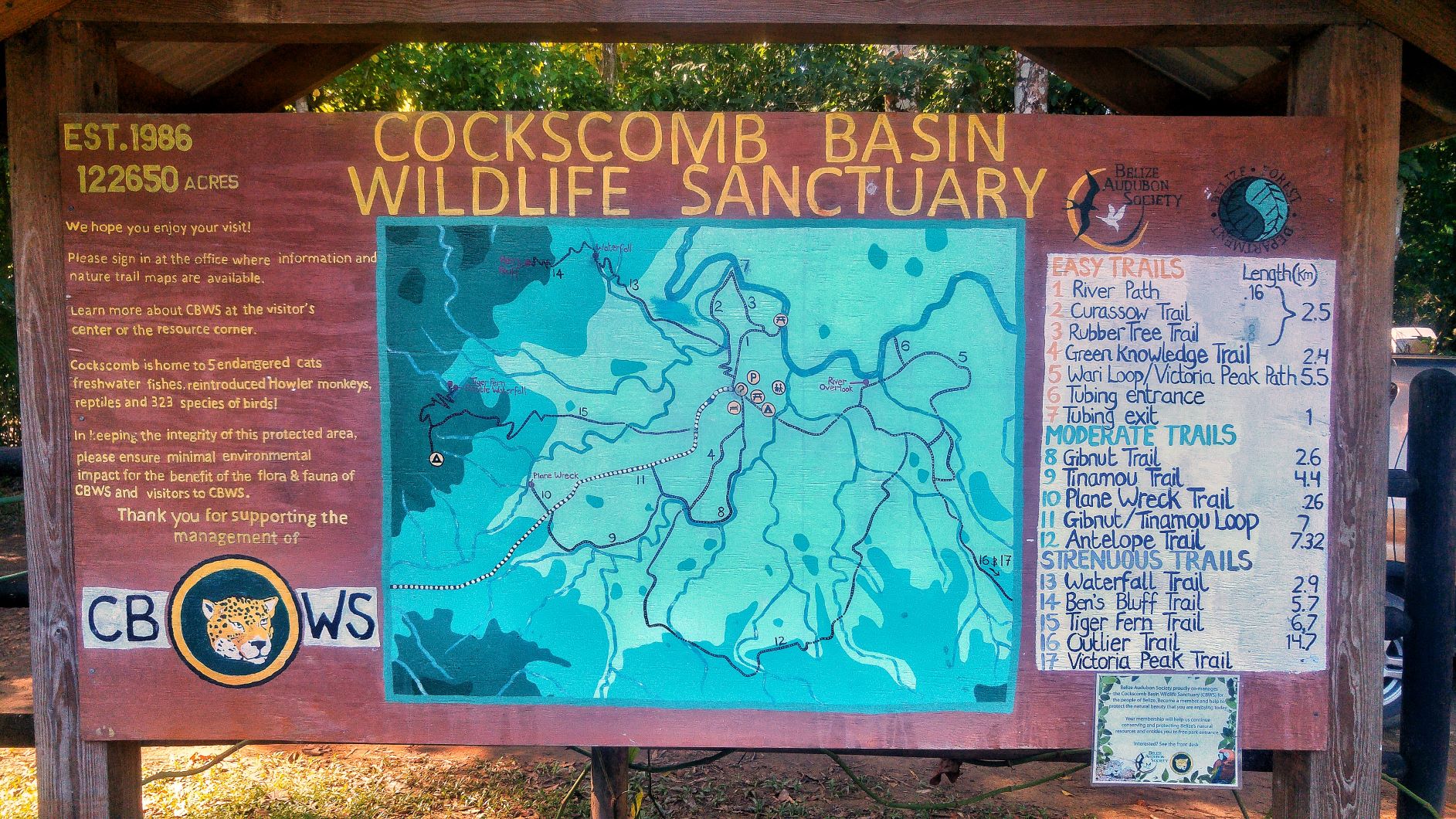
Having paid the entrance fee of $10 BZD ($5 USD, but only $2.5 BZD for Belize nationals), you’re free to hike any of the trails. The heat is intense so don’t attempt more than a couple of routes and take it slow. At the Jaguar Reserve Nature Centre, Park rangers are on hand to advise you about each trail. Taking their recommendations with that given by locals, we decided on the Wari Loop and the Tiger Fern Trail.
The Wari Loop
Classed as ‘Easy’, the Wari Loop seemed like a good warm up. It’s an almost flat circular loop around semi open forest, which passes a lagoon along the way. The Wari Loop is also where park rangers monitor birds, as it has the highest sightings.
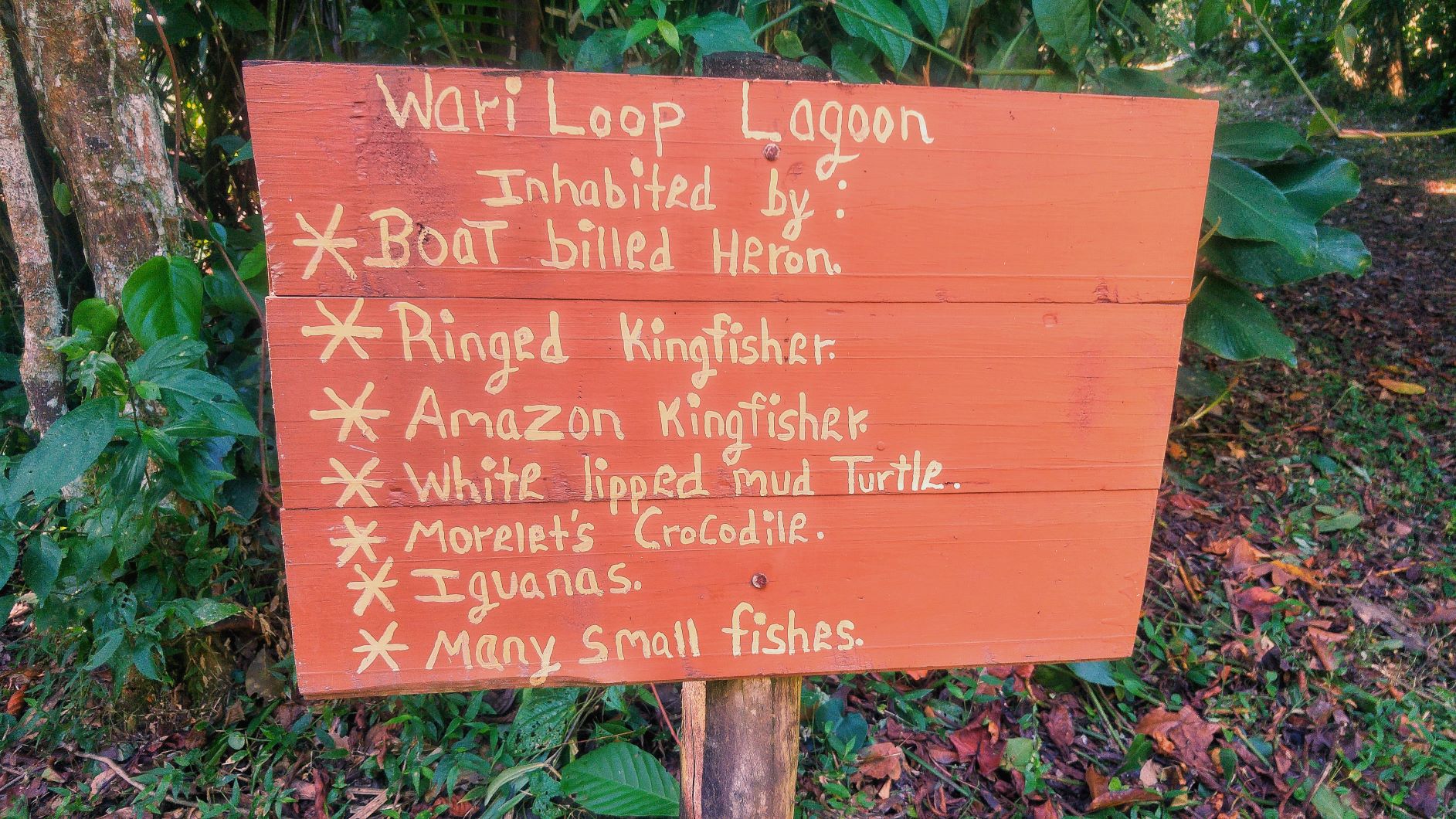
The trail takes about an hour and is very easy to follow. The heat however, is really hard to deal with. I’ve spent time in the Amazon rain forest, travelled across Greece in the summer and spent days trekking through the Sumatran jungle. The temperatures in those places were nothing compared to that on the Wari Loop. The humidity had us feeling lethargic in no time and there was no way to escape. Top tip – make sure you bring lots of water with you.
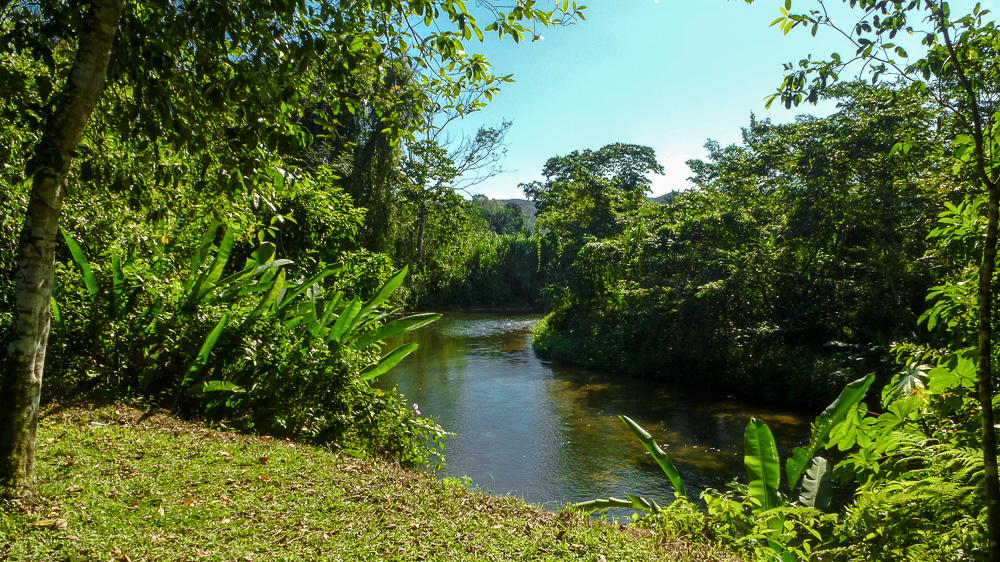
Returning to the Jaguar Reserve Nature Centre we were greeted by no end of brightly coloured birds. Rose pulled out her camera and sat photographing them, whilst I decided which trail to tackle next. The ‘Intense’ Tiger Fern Trail caught my attention, but Rose decided it was too hot for another expedition. Not me though!
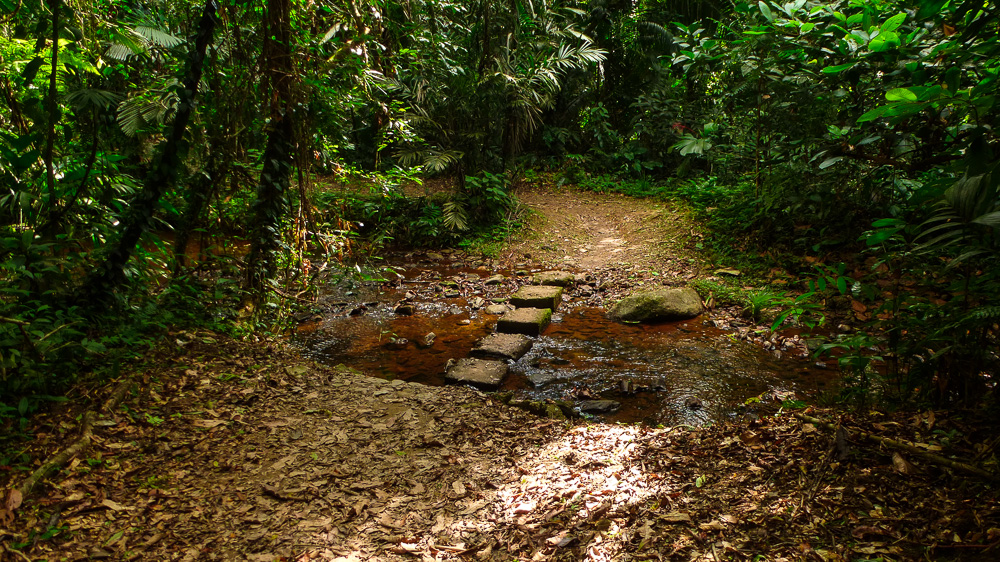
The Tiger Fern Trail
With two bottles of water in hand and a peanut bar in my pocket, I set off. The Tiger Fern Trail starts with a leisurely stroll and had me thinking, “this isn’t so bad”. But then an step ascent hit hard. You’ll find yourself hiking up hill for most of the trail, clambering over rocks and tree roots. The heat and humidity was strong, but bizarrely not as strong as on the Wari Loop.
As the intense hiking kicks in, you’ll see signs for rest stops every 10 minutes and they’re definitely needed. Thank you Cockscomb!

Trekking is usually about the journey, but on Cockscomb’s Tiger Fern Trail, it really is all about the destination. As you reach a clearing at the top of the path and exit the forest, you reach the peak of Cockscomb Basin Wildlife Sanctuary. Looking out over the canopy of trees, it’s possible to see Victoria Peak in the distance, which is the second highest point in Belize! You’ll feel on top of the world after putting yourself through the hike.
Local school children have built a small picnic and camping area here, so there’s benches and shade to take a well earned rest.

The journey isn’t over though. A steep descent leads to a beautiful double waterfall, which is a perfect place for swimming and relaxing. The first waterfall welcomes you at the bottom of the trail, whereas the second (and most spectacular) waterfall can be found to the right hand side on a slightly hidden path. Even if you didn’t bring a swimming costume you’ll want stay a while, jump in and cool off.

On the Tiger Fern Trail you return the way you came. The most difficult part is the 500m uphill climb from the waterfalls. After that it’s mostly down hill. Just be careful where you place your feet amongst the rocks and tree roots and you’ll be fine. The return hike took two and a half hours, with some brief stops to catch my breath. I consider myself fit and a quick walker. Still, I would definitely class it as ‘Intense’, but that’s mostly down to the heat. We’re just not used to those kind of conditions in England.
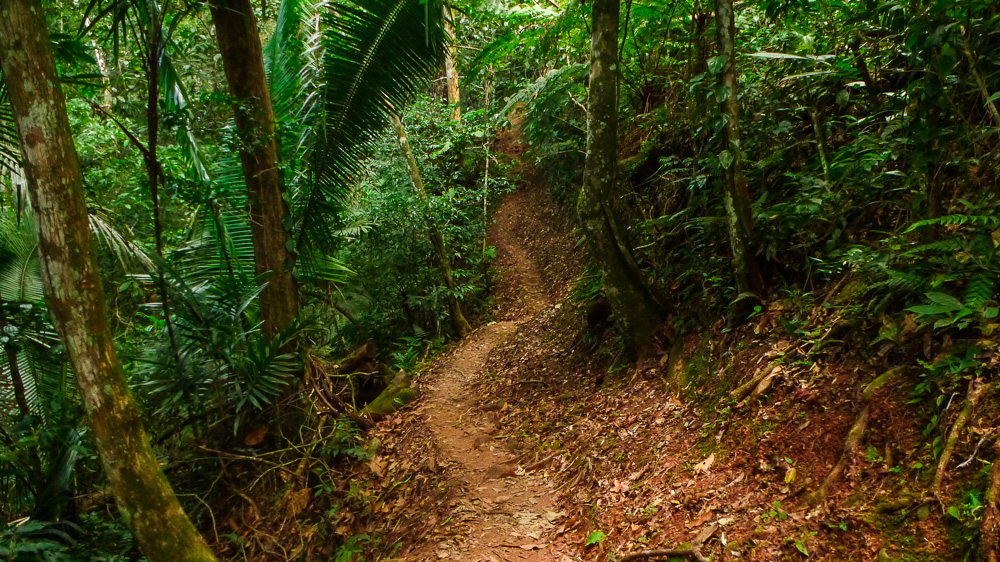
All routes lead back to the Jaguar Reserve Nature Centre, which is where Rose based stayed to take photos during my hike. She had an incredible time. Not only did she photograph exotic birds, but a vulture and a snake too! You don’t even have to go far to see the wildlife in Cockscomb Basin.
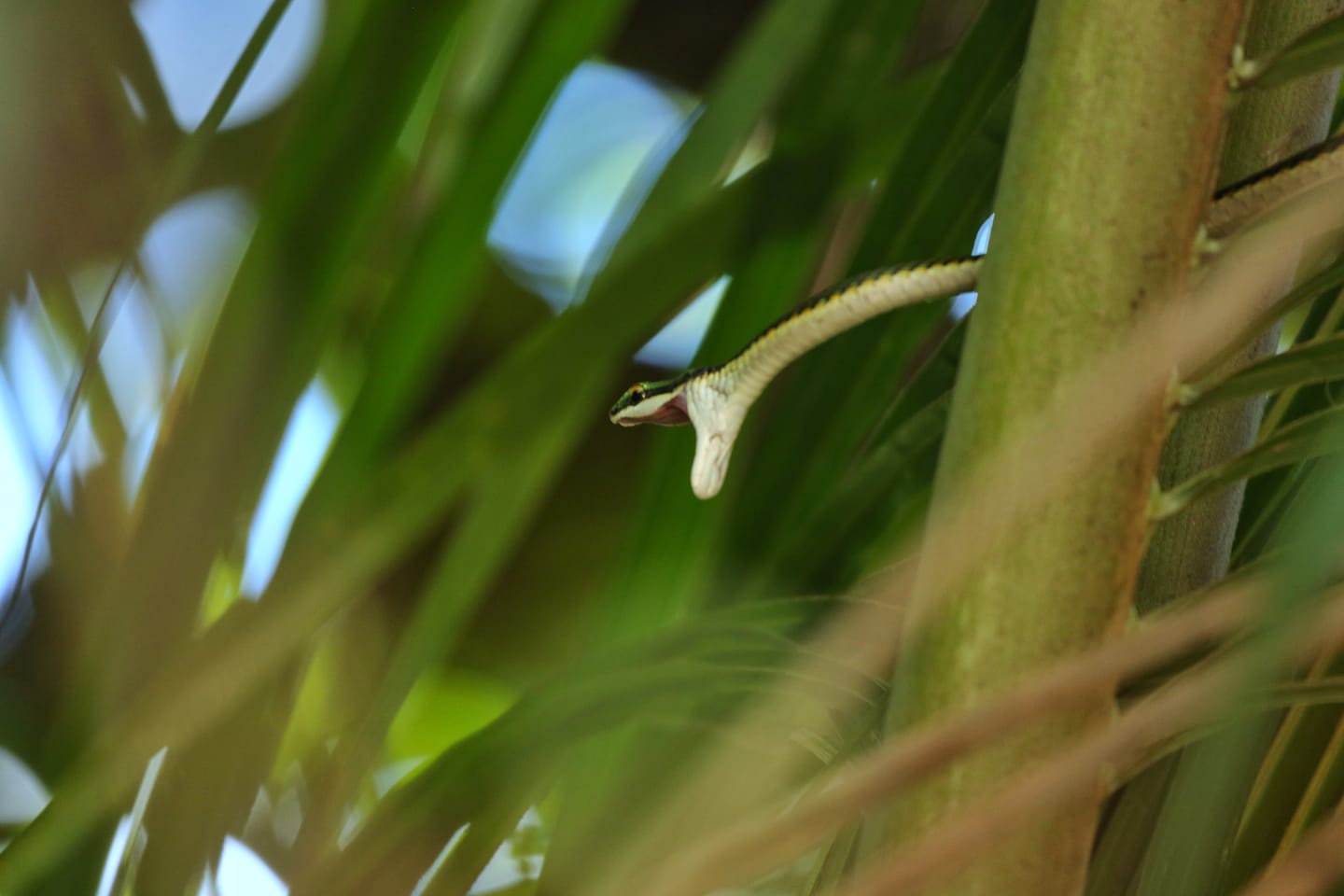
How do I get to Cockscomb Basin Wildlife Sanctuary?
It’s an easy journey from any of the places you’ll be staying. Dangriga, Placencia and our base, Hopkins.
We stayed at Tania’s Guest House in Hopkin’s. The rooms are simple, but the prices are a fraction of what you’d pay elsewhere in Hopkins. We were greeted with amazing hospitality and what’s more, the accommodation is just a couple of minutes walk from the beach.
I advise to arrive at Cockscomb Basin Wildlife Sanctuary as early as possible. You have more chance of spotting wildlife and it gives you time to start the trails before the intense heat kicks in. For this reason, Hopkins is the best place to stay nearby. (It’s also a beautiful place to relax, kick back on the beach and listen to some local Garifuna drumming).
Taxis are expensive in Belize and from Hopkins you would expect to pay $50 USD for a return journey to Cockscomb Basin. However, you can do it cheaply on a bus for $2 USD. Here’s how…
Hopkins buses are scheduled around the community’s working days and not for the convenience of late rising tourists. There are two buses that depart from Hopkins. The first leaves the main bus stop at 6AM and goes past the Cockscomb entrance, which is called the Maya Women’s Centre. This takes around 15-20 minutes and will cost you $5 BZD ($2.5 USD).
The second bus leaves Hopkins at 7AM and drops you at the highway bus stop ($2 BZD / $1 USD). Here there will be a ‘James Bus’ waiting, which is heading in the direction of Placencia. Jump on that bus and it will stop at the Maya Women’s Centre ($2 BZD / $1 USD). Again this is a 15-20 minute journey.
Buses in Belize aren’t like those back home. They’re old American school buses that blast out reggae music. The person collecting your ticket fayre is usually dressed like they’re in a hip hop video.
You get on and take a seat (or stand). After a few minutes the Hip Hop Inspector with a large wallet will come to collect your fayre. Tell them where you’re going and pay the fee. You usually aren’t issued a ticket unless it’s a journey of a few hours.
Cockscomb Basin Wildlife Sanctuary and the Jaguar Nature Reserve Centre are six miles inland from the Maya Women’s Centre (which is where you pay the $10 BZD entrance fee). You do not want to walk those six miles! Wave your arm at the passing vehicles outside and hitch a ride in. Alternatively, there’s usually tourists with rental vehicles passing who will be happy to take you to the entrance with them. Hitching is also very safe in Belize, so this is quite a normal thing to do.
You can also ask the Women’s Maya Centre to call you a taxi, but it will cost $40 BZD ($20 USD) each way. The taxis can take up to four people, but is a big cost. The earlier you arrive to Cockscomb Basin Wildlife Sanctuary, the more chance you have of hitching a ride.
When you’re ready to leave, visit the car park by the Jaguar Reserve Nature Centre and ask anyone with a friendly face if you can hitch a ride to the highway. Here you can wait for a bus heading back to Hopkins (the last one will likely pass Cockscomb Basin around 5PM). If you’re lucky like we were, the driver may even be heading to Hopkins.

How much does Cockscomb Basin Wildlife Sanctuary cost to visit?
When you arrive at the Maya Women’s Centre, you pay the entrance fee of $10 BZD ($5 USD). The entrance fee is only $2.5 BZD for Belize nationals.
How long should I spend at Cockscomb Basin Wildlife Sanctuary?
You should allow two to three hours for each trail you want to visit, plus half an hour to get in to the Nature Reserve. If you have to walk in from the Maya Women’s Centre, then allow two and a half hours each way. The best thing to do is give yourself a full day. You’d probably be too exhausted to do something afterwards anyway!
Essential Items for Your Trip to Cockscomb Basin Wildlife Sanctuary
These hiking poles are ideal for trekking in Central America. I can almost guarantee you’ll spend a few days (and nights!) on volcanoes and these will make it a lot easier on your knees.
You’ll need sun cream to fight against Belize’s scorching sun. I recommend an eco friendly reef sun cream. This means if you also use it to go swimming, you won’t be harming the underwater environment and animals. You won’t get burned either!
Save the environment and stay hydrated with a bottle that filters your water. This is ideal for travelling overseas where people don’t have the luxury of potable tap water. It will mean you don’t get sick or use a lot of non-recyclable plastic. You can also use it when refilling your bottle at the waterfalls on The Tiger Fern Trail
SHARE THIS POST
